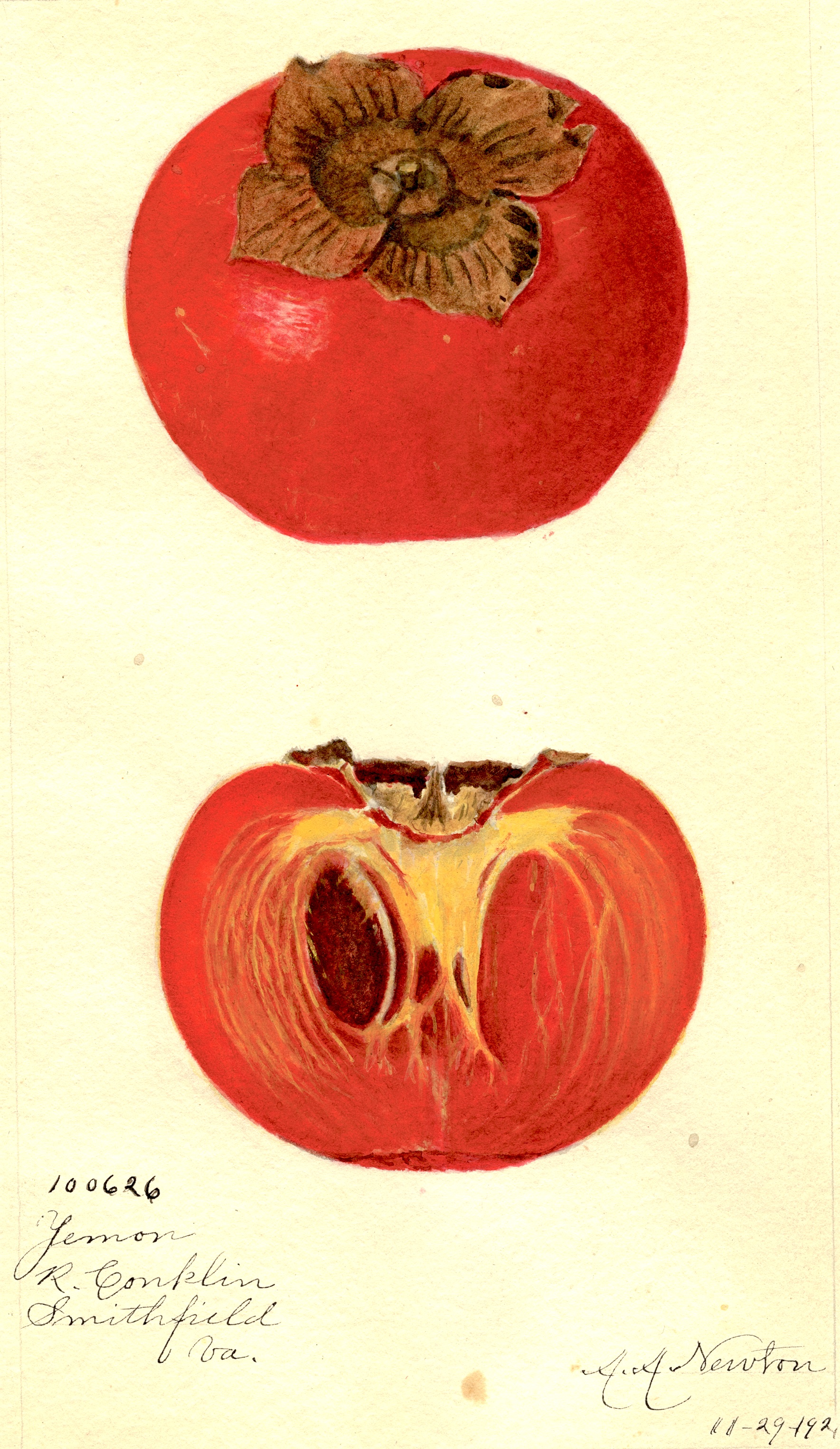 YEMON
YEMON
A rich tasting dark-fleshed, seeded persimmon, the Yemon persimmon appeared among the first shipment of trees forwarded from Japan by Rev. Henry Loomis in 1870. The leathery skin protected a flesh that when ripe had a jelly like texture and a honeyed taste. Though classified as a mixed colored persimmon, pollinated examples consistently tended toward dark flesh. Because it was a late season fruit, the variety retained a foothold on grower’s imaginations as a variety saleable into the winter. Alternate name: Among.
Cultivation showed that this was one of the more cold tolerant of the Japanese persimmons, so that nurseries as far north as Virginia offered the variety. Part of its saleability, too, arose from its resemblance to some of the larger strains of American persimmon.
“Large, flat, tomato-shaped, somewhat four-sided; diameter 2 ¼ inches longitudinally and 3 ¼ inches transversely; skin light yellow, changing to dull red mottled with orange-yellow; distinct in color; flesh deep dull red, brown around the seed of which there are usually a few; some specimens are entirely light-fleshed and seedless; there is no astringency after the fruit begins to soften; quality fine, one of the best.” Sources: Hardrada Harold Hume and Frank Charles Reimer, Japanese Persimmons Florida Agricultural Station Bulletin #71 ( March 1904), 79-80.
Nurseries that sold Yemon Kaki prior to 1920:
Alabama Nurseries, Huntsville, AL 1904. Atlanta Nurseries, Atlanta GA 1891. Cherokee Nursery, Waycross, GA 1893. Clingman Nursery & Orchard Company, Kiethville, LA 1908. Comal Springs Nursery, New Braunfels, TX 1893. Fruitland Nurseries, Augusta, GA 1890. Old Dominion Nurseries, Richmond VA 1907. JOrlando Nurseries, Orlando, FL 1889. Pomona Nurseries, Macclenny, FL 1892. Seven Oaks Nurseries, Seven Oaks, FL 1890. Van Lindley Nurseries, Pomona, NC 1911.
Image: U.S. Department of Agriculture Pomological Watercolor Collection. Rare and Special Collections, National Agricultural Library, Beltsville, MD 20705, Amanda Newston, 1921.
David S Shields